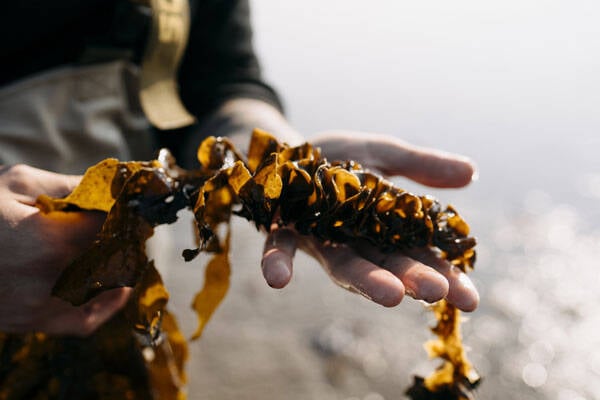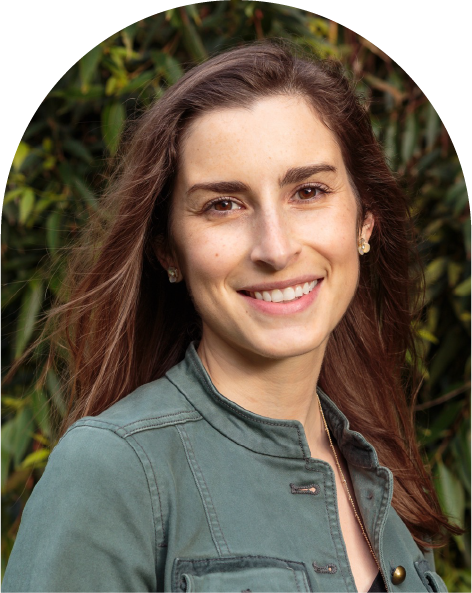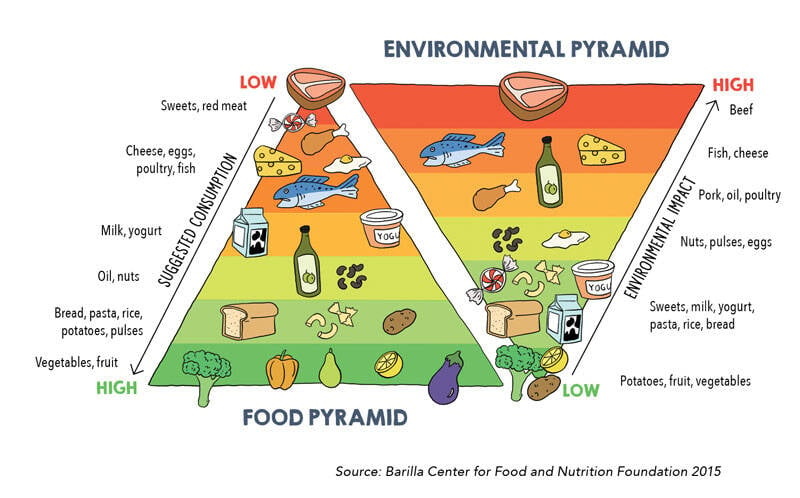Embrace the enormous potential of food as a climate solution. Every food professional needs to be taking action to address the climate emergency. The great news is that we have some of the most impactful solutions available in our immediate domain. If you look at the list of solutions that Project Drawdown put together, reducing food waste is number one, and plant-rich diets is the third most impactful climate solution. So double down on your food waste reduction, and analyze your menus and product portfolios. How many of your dishes are plant-forward or put vegetables in the spotlight? Are you enabling conscious eating by making these options widely available and delicious and craveable? That means taking a look at your offerings and making sure the options that are healthy, humane, and sustainable are at the very least equally represented and easy to choose. The best way is to make all choices good choices, of course, but try to make it as easy as possible for your guests and customers to be the conscious eaters they aspire to be.
You literally wrote the book on conscious eating. What can people in our industry do to help people towards conscious eating?

© Chantal Arnts
What can food companies and producers do to push these products towards the mainstream?
© Chantal Arnts

It’s still early days. There is a lot of research left to be done in order for these products to be proven viable. Things like nutrition, toxicity, and scalability. It’s not at the stage where it’s ready to conquer the market, but that’s exciting. You have the opportunity to get in near the ground level, and be part of the R&D process. Test cases are being run successfully to demonstrate that people are willing to buy these products if they’re available, and chefs and other food professionals can influence the product design. Think of something like kelp pasta, for example. That shows it’s already possible to use these products as a replacement. What else can we do with them? Perhaps companies with public climate or plant-forward commitments could work to integrate these foods into those broader efforts.

What’s the first thing that comes to mind when you think about ‘food producers of the future’?
Sea vegetables just make so much sense to me as a solution for all the known issues that plague the food industry. We can create something that’s plant-based, nutritious, endlessly renewable, creates localized economic empowerment, can sequester carbon, and has boundless variety to be enjoyed. Sea vegetables aren’t boring. There’s so many different types. There are boundaries to overcome, mostly misperceptions of lack of awareness, but something like a kelp burger shows it’s possible to translate the potential into real products.
Seaweed. All manner of sea plants really. Sea vegetables is a better name, because seaweed doesn’t sound great. I think of a company like Akua and their kelp burgers, who are trying to commercialize these sea vegetables. There is so much potential in these products. They have great nutritional value, and they grow incredibly fast with hardly any inputs. Speaking of kelp, specifically, kelp forests have even been called the ‘sequoias of the sea’ for their carbon sequestration potential. Research from the Blue Food Assessment shows that we have more potential for growing food production in the water than on land, precisely because we’re not just talking about fish but a delicious diversity of aquatic foods. Relatedly, the Seaweed Manifesto is an excellent white paper on the topic.
Another advantage is that culturally, these foods have been central to many cuisines in, for example, Asia for centuries. It’s not like cell-based meat, where you have to create an entirely new cuisine with new flavor profiles and new food pairings and really get consumers over a mental hurdle. Instead, there are generations of existing knowledge and wisdom that we simply need to bring to western countries and adapt to new cultural contexts. Finally, these foods offer the opportunity for a more equitable system. They can be a gamechanger for coastal communities and sustainable livelihoods, especially those that have seen their existing natural resources and some fish species become threatened from overfishing. Collectively, we can help turn these fishermen into farmers of the sea, in a way that empowers them with strong markets, infrastructure, distribution channels, and so forth, providing a reliable future for their families and communities.


Sophie Egan wears many hats. She is the founder of Full Table Solutions, Director of Strategy for the Food for Climate League, Co-Director of the Menus of Change University Research Collaborative, Senior Advisor for Sustainable Food Systems at R&DE Stanford Dining, and author of How to Be A Conscious Eater. Curious about her vision on the future of our food system, Food Inspiration reached out for a conversation.
Jelle Steenbergen Xiao Er Kong
interview
4 min





Embrace the enormous potential of food as a climate solution. Every food professional needs to be taking action to address the climate emergency. The great news is that we have some of the most impactful solutions available in our immediate domain. If you look at the list of solutions that Project Drawdown put together, reducing food waste is number one, and plant-rich diets is the third most impactful climate solution. So double down on your food waste reduction, and analyze your menus and product portfolios. How many of your dishes are plant-forward or put vegetables in the spotlight? Are you enabling conscious eating by making these options widely available and delicious and craveable? That means taking a look at your offerings and making sure the options that are healthy, humane, and sustainable are at the very least equally represented and easy to choose. The best way is to make all choices good choices, of course, but try to make it as easy as possible for your guests and customers to be the conscious eaters they aspire to be.
You literally wrote the book on conscious eating. What can people in our industry do to help people towards conscious eating?
What can food companies and producers do to push these products towards the mainstream?
© Chantal Arnts

It’s still early days. There is a lot of research left to be done in order for these products to be proven viable. Things like nutrition, toxicity, and scalability. It’s not at the stage where it’s ready to conquer the market, but that’s exciting. You have the opportunity to get in near the ground level, and be part of the R&D process. Test cases are being run successfully to demonstrate that people are willing to buy these products if they’re available, and chefs and other food professionals can influence the product design. Think of something like kelp pasta, for example. That shows it’s already possible to use these products as a replacement. What else can we do with them? Perhaps companies with public climate or plant-forward commitments could work to integrate these foods into those broader efforts.

© Chantal Arnts

What’s the first thing that comes to mind when you think about ‘food producers of the future’?
Sea vegetables just make so much sense to me as a solution for all the known issues that plague the food industry. We can create something that’s plant-based, nutritious, endlessly renewable, creates localized economic empowerment, can sequester carbon, and has boundless variety to be enjoyed. Sea vegetables aren’t boring. There’s so many different types. There are boundaries to overcome, mostly misperceptions of lack of awareness, but something like a kelp burger shows it’s possible to translate the potential into real products.
Seaweed. All manner of sea plants really. Sea vegetables is a better name, because seaweed doesn’t sound great. I think of a company like Akua and their kelp burgers, who are trying to commercialize these sea vegetables. There is so much potential in these products. They have great nutritional value, and they grow incredibly fast with hardly any inputs. Speaking of kelp, specifically, kelp forests have even been called the ‘sequoias of the sea’ for their carbon sequestration potential. Research from the Blue Food Assessment shows that we have more potential for growing food production in the water than on land, precisely because we’re not just talking about fish but a delicious diversity of aquatic foods. Relatedly, the Seaweed Manifesto is an excellent white paper on the topic.
Another advantage is that culturally, these foods have been central to many cuisines in, for example, Asia for centuries. It’s not like cell-based meat, where you have to create an entirely new cuisine with new flavor profiles and new food pairings and really get consumers over a mental hurdle. Instead, there are generations of existing knowledge and wisdom that we simply need to bring to western countries and adapt to new cultural contexts. Finally, these foods offer the opportunity for a more equitable system. They can be a gamechanger for coastal communities and sustainable livelihoods, especially those that have seen their existing natural resources and some fish species become threatened from overfishing. Collectively, we can help turn these fishermen into farmers of the sea, in a way that empowers them with strong markets, infrastructure, distribution channels, and so forth, providing a reliable future for their families and communities.


Sophie Egan wears many hats. She is the founder of Full Table Solutions, Director of Strategy for the Food for Climate League, Co-Director of the Menus of Change University Research Collaborative, Senior Advisor for Sustainable Food Systems at R&DE Stanford Dining, and author of How to Be A Conscious Eater. Curious about her vision on the future of our food system, Food Inspiration reached out for a conversation.
Jelle Steenbergen Xiao Er Kong


Embrace the enormous potential of food as a climate solution
4 min















